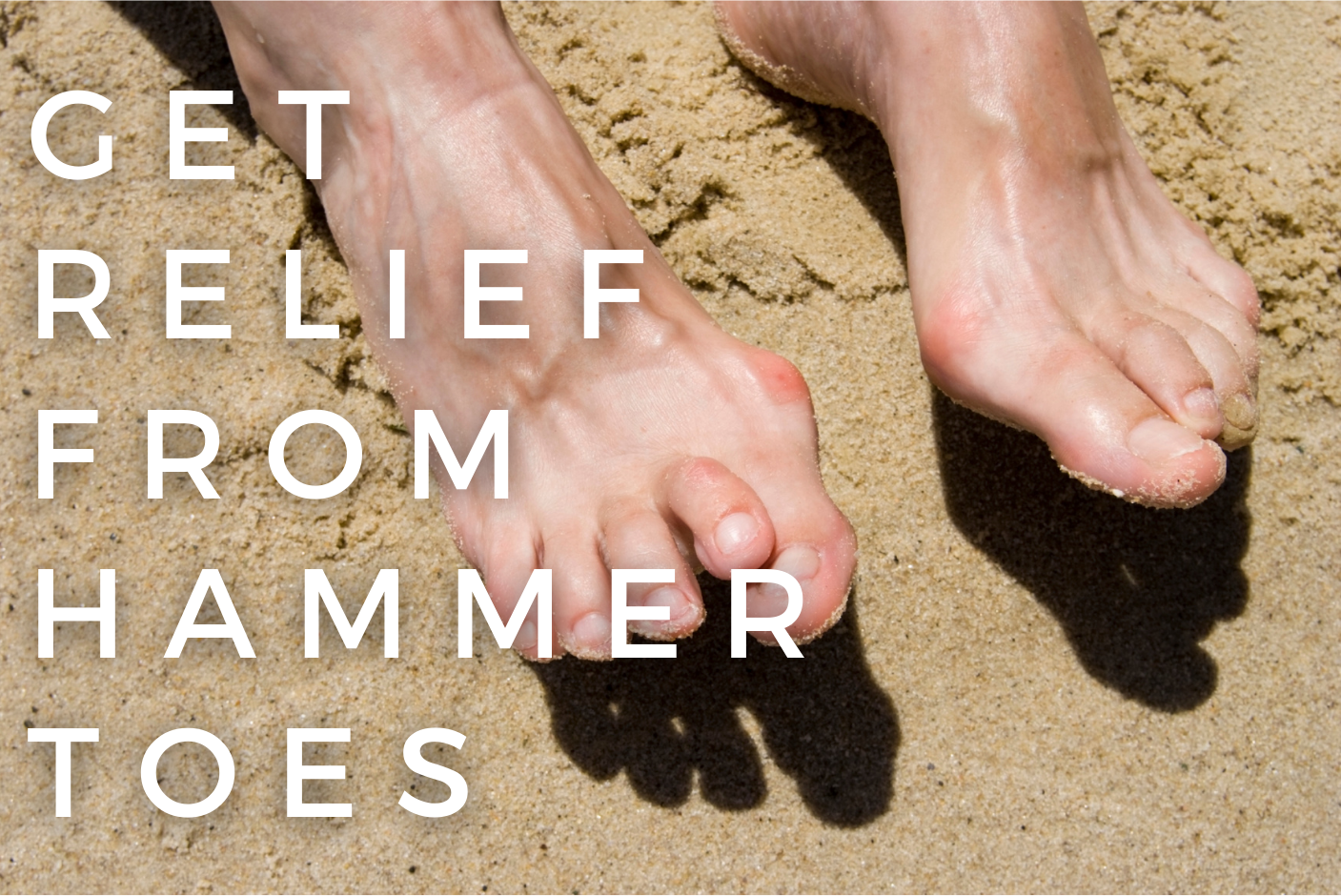
Hammer Toe: Causes, Symptoms, and Diagnosis
So often you experience foot pain and think it was the shoes you wore or you spent too much time on your feet. This might be the case, but if your foot pain continues or occurs more often than not. It might be time to evaluate what might be causing your foot pain. There are several foot ailments that can lead to common foot pain diagnoses such as plantar fasciitis, bunions or hammer toes.
Today we will cover hammer toe causes, symptoms, and diagnosis as well as some ways to treat them. So if you are like most people you might be wondering what a hammer toe is.
What is a Hammer Toe?
There are instances where a hammer toe may be present at birth. This is not where the majority of hammer toes come from. A hammer toe usually develops over time due to arthritis or wearing ill-fitting shoes, such as tight, pointed heels. In most cases, a hammer toe condition is treatable. Although, like any other ailment, if left untreated it will get more severe and the only treatment may be surgery.

A few other diagnoses in the toes include mallet toe and claw toe. The difference in a mallet toe is that the deformity happens in the second toe joint where a hammer toe is in the first toe joint. Then with a claw toe, the deformity happens in both toe joints.
What Causes a Hammer Toe?
The main cause of hammertoe is poorly fitted and/or poorly designed footwear. Any footwear that is too tight in the toe box, especially high-heeled shoes, can push the toes forward, crowding one or more of them into a space that is not large enough to allow the toes to lie flat and spread as they should.
A hammer toe is the result of a muscle imbalance that puts pressure on the toe tendons and joints. Muscles work in pairs to straighten and bend the toes. If the toe is bent in one position long enough, the muscles and joints tighten and cannot stretch out. Your toe contains two joints that allow it to bend at the middle and bottom. A hammer toe occurs when the middle joint becomes flexed or bent downward.
Common causes of hammer toe include:
- Wearing shoes that don’t fit properly
- Traumatic injuries in which toes are jammed or broken
- Damage to nerves and muscles from other conditions, such as arthritis
- Foot structure or anatomy such as an unusually high foot arch, tightened ligaments or tendons in the foot
- Pressure from a bunion, which is when your big toe points inward toward your second toe
- Diabetic neuropathy. This can cause abnormal foot biomechanics due to nerve and/or muscle damage.
- Genetics or heredity
Top Symptoms of a Hammer Toe

A hammer toe is painful, especially when you are moving it or wearing shoes. Some common symptoms of hammertoe may include:
- Swelling or redness
- Inability to straighten the toe
- Difficulty moving the toe that worsens over time
- Pain, especially when walking or wearing shoes
- A corn or callus on the top of the middle joint of the toe or on the tip of the toe
How is a Hammer Toe Diagnosed?
How to Treat a Hammer Toe
According to OrthoInfo, in the early stages of hammer toe—when the joint is still flexible—treatment typically consists of simple measures. Some include wearing shoes or boots that provide sufficient width in the toe box to ensure minimal compression. Use inserts that help the toes flatten out and spread and give sufficient support to the metatarsal arch in the forefoot. If hammer toes have already formed, padded socks help protect the tops and the tips of the hammer toes and may reduce pain from rubbing and chafing.
If the affected toe is still flexible, changing to footwear with a larger toe box and lower heels can allow the toe to realign itself and help reduce pressure and pain. If the toe has some limited flexibility, a podiatric physician or foot specialist may be able to straighten it simply by making an incision and releasing the tendon.
Top At-Home Treatments for Hammer Toe
- Wearing toe pads or insoles in your shoes
- Wearing shoes with a wider toe box or even sandals
- Foot alignment socks to stretch and align the toes
- Foot strengthening exercises
Now you know what might be causing your hammer toe pain, what might be causing your hammer toe and the foot care solutions you can do to reduce or even eliminate your foot pain. Snuggle up on the couch with your My-Happy Feet socks for a great evening of relaxation and foot care that provides relief for those aching feet or give yourself 10-15 minutes to perform some of the general foot care exercises mentioned in the foot care for pain relief section of our site. Shop our full line of socks today or contact your doctor for help finding the right orthotics for you.
Share this post
- Tags: Foot Alignment Socks, foot care tips, foot pain, foot pain causes, foot pain relief, foot pain symptoms, hammertoe